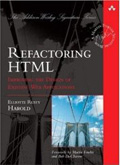September 29th, 2011
So after reading this poll of mathematicians and computer scientists who have given the problem way more thought than I have, I now suspect that indeed P == NP (though perhaps not usefully so). Why do I think this?
Read the rest of this entry »
Posted in Math | 4 Comments »
January 1st, 2011
In 2011 my New Year’s resolution is to do more things the easy way, even if it takes longer the first time. I am going to stop using brute force to solve problems. In particular:
- I am finally going to memorize how one redirects both stderr and stdout to the same stream. (
2>&1 |)
- I am going to learn the sed? trick my advisor showed me 20 years ago for repeating a command from the shell history while substituting one word for another, instead of just using the arrow key to backup to and erase the string. (
^string1^string2^ or !!:s/string1/string2/ or for global substitution, not just the first occurrence !!:gs/string1/string2/)
- I am going to increase my regex fu and use regular expressions consistently instead of just editing 20 lines of copy and paste code. (This would be easier if every editor didn’t have subtly different syntax.)
- I am going to use Python to automate repetitive tasks.
Posted in Programming | 5 Comments »
December 4th, 2010
First for the record, I’m speaking only for myself, not my employer, the W3C, Apple, Google, Microsoft, WWWAC, the DNRC, the NFL, etc.
XML 1.1 failed. Why? It broke compatibility with XML 1.0 while not offering anyone any features they needed or wanted. It was not synchronous with tools, parsers, or other specs like XML Schemas. This may not have been crippling had anyone actually wanted XML 1.1, but no one did. There was simply no reason for anyone to upgrade.
By contrast XML did succeed in replacing SGML because:
- It was compatible. It was a subset of SGML, not a superset or an incompatible intersection (aside from a couple of very minor technical points no one cared about in practice)
- It offered new features people actually wanted.
- It was simpler than what it replaced, not more complex.
- It put more information into the documents themselves. Documents were more self-contained. You no longer needed to parse a DTD before parsing a document.
To do better we have to fix these flaws. That is, XML 2.0 should be like XML 1.0 was to SGML, not like XML 1.1 was to XML 1.0. That is, it should be:
- Compatible with XML 1.0 without upgrading tools.
- Add new features lots of folks want (but without breaking backwards compatibility).
- Simpler and more efficient.
- Put more information into the documents themselves. You no longer need to parse a schema to find the types of elements.
These goals feel contradictory, but I plan to show they’re not and map out a path forward.
Read the rest of this entry »
Posted in XML | 48 Comments »
June 25th, 2010
Have you ever seen an Ant error message like this?
BUILD FAILED
/Users/elharo/Projects/XOM/build.xml:545: Problem: failed to create task or type scp
Cause: Could not load a dependent class com/jcraft/jsch/Logger
It is not enough to have Ant's optional JARs
you need the JAR files that the optional tasks depend upon.
Ant's optional task dependencies are listed in the manual.
Action: Determine what extra JAR files are needed, and place them in one of:
-/opt/ant/lib
-/Users/elharo/.ant/lib
-a directory added on the command line with the -lib argument
Do not panic, this is a common problem.
The commonest cause is a missing JAR.
This is not a bug; it is a configuration problem
As usual, the ant error message is completely unhelpful, though for once it’s at least technically correct. (Most of the time when ant says, “This is not a bug; it is a configuration problem”, it is in fact a bug and not a configuration problem.) Here’s what’s really happening.
Read the rest of this entry »
Posted in Java | 3 Comments »
April 28th, 2010
Is req a request or a requisition?
Is res a response, a reservation, a resume, or a result?
Is def a default or a definition?
Is rng a range or a random number generator?
Is v1 version 1 or value 1?
Is e an event, an entity, or an exception?
Is f a file or a float?
Is lst a list or the least value?
Is temp a temporary variable or a temperature reading?
Is rep a representation, a representative, a repetition, or a reputation?
Is tm a time or a trademark? Or even another temporary variable? And if it is a time, is it a timestamp, a time of day, or a duration? (These are three very different things.)
Is admin an administrator, an administrative assistant, or a system administrator?
In context, you can usually figure these things out, but you have to think about them. That’s inefficient. Far better to just spell out what you mean from the get go.
Read the rest of this entry »
Posted in Programming | 8 Comments »
